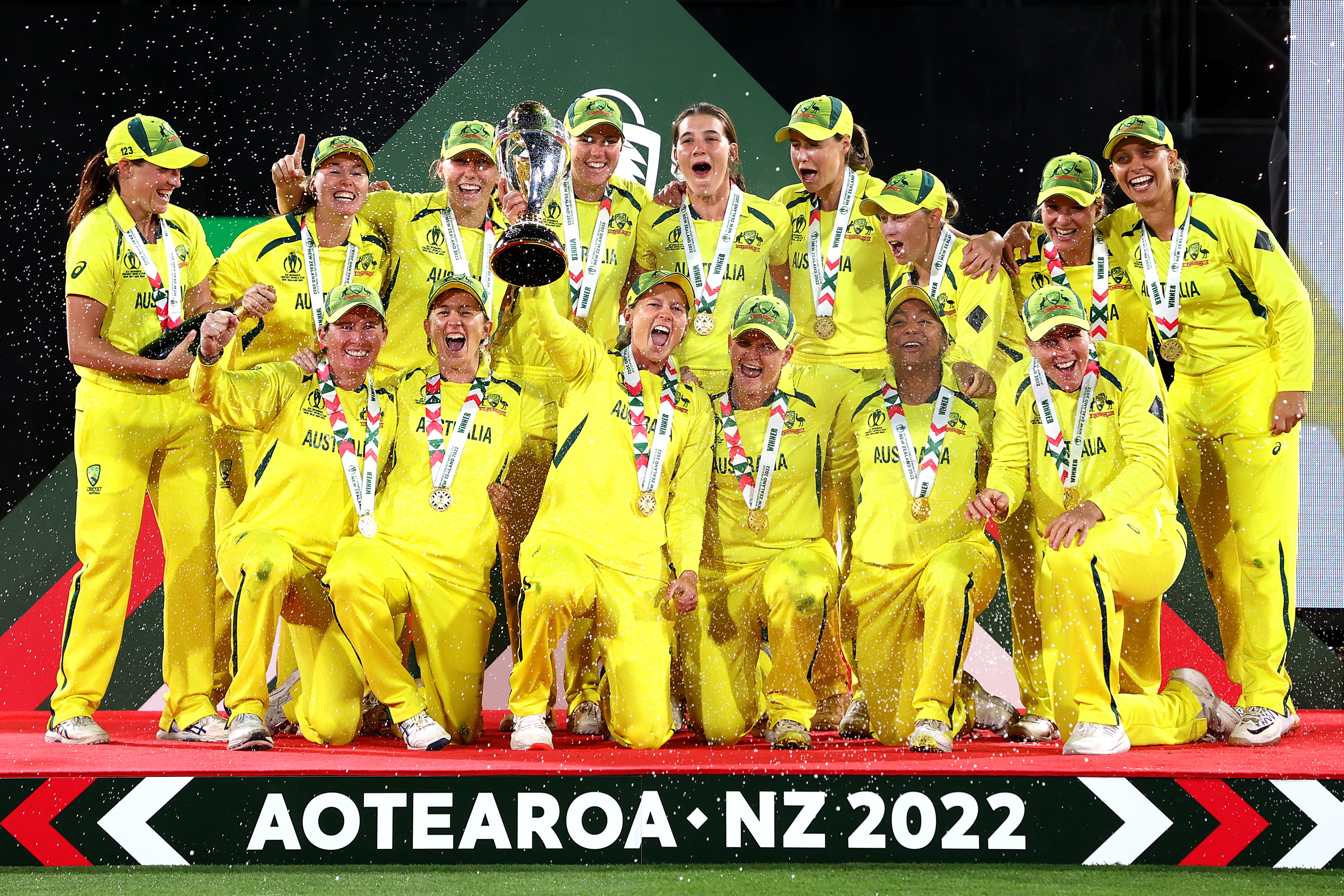Decoding the dominance of Australia Women’s cricket team
When Australia failed to make it to the final of the ODI World Cup in 2017 the Australian women’s team was considered to be losing its charm. However, the team scripted an era of dominance after that losing very few matches and then winning the next World Cup trophy without losing any game.

Australia have excelled in various sports over the years and cricket has been one of them. The Australian men’s cricket team was considered to be almost impossible to beat. They used to win in any playing conditions and against any opponents. The era of dominance for them was between 1999-2007. The Australian women’s cricket team also enjoys the same stature in world cricket currently. The fact proves their monopoly over the success in the sport that the team has won seven World Cup titles so far and still, no one looks to be a really challenging rival for them.
The Australian women’s cricket team has been dominant but when they were not able to make it to the final of the 2017 ODI World Cup, everyone thought that this team was not strong as before. They can be now beaten and their era of dominance will end. However, the team bounced back with a bang when they first won the T20 World Cup in 2019. Now, lifting the 2022 ODI World Cup was the final nail in the coffin to assert their authority over the sport. The team produced a turnaround and it was possible due to a combination of infrastructure, investment, domestic structure, and the quality of the game that the team exhibits on the ground.
Summing up the 2022 World Cup, except for their first match against England, Australia almost hammered every opposition. They won in the semi-final against West Indies by a huge margin of 157 runs and beat England in the final by 71 runs very comfortably. This margin of victories even in knockouts shows their level of the game as compared to other teams. Alyssa Healy was the leading run-scorer of the tournament and scored 509 runs in the tournament at 56.55. Another Australian batter, Rachael Haynes was the second highest run-scorer with 497 runs at 62.12.
Jess Jonassen was the leading wicket-taker for the team with 13 wickets and was the third highest wicket-taker in the tournament. Alana King scalped 12 wickets in the competition. The team kept rotating the players throughout the competition but still, it didn’t affect their performance. The victory was a collective team performance and it is evident from stats as five of the Australian batters average above 50 in the showpiece event. Also, three of the players have 10 or more wickets and five of the members have an economy of 4.50 or below.
The first and foremost reason behind the dominance of the team is the foundation they have built with the domestic structure. Australia have Women’s Big Bash League (WBBL) and Women’s National Cricket League (WNCL) being played every year. Both leagues are fiercely competitive and the Australian players get trained for pressure situations in international matches as they continuously play in the leagues. Also, WBBL and WNCL teams are fed by a robust club cricket system. The annual National Cricket Census shows a yearly growth of 10% in women taking up cricket as a profession even in Covid era. WBBL is known widely and it features eight teams. WNCL is the domestic 50-over tournament between seven state-based teams.
England is most close to Australia in terms of having a quality league. They had a Women’s Cricket Super League also known as Kia Super League from 2016 to 2019. Also, the inaugural season of ‘The Hundred’ was a good initiative and it has also benefited the cricketers playing in the competition.
These leagues also groom players at a very young age. The Australian team had several young players in their World Cup squad like Annabel Sutherland, Darcie Brown, and Amanda Wellington who have adjusted to international cricket quickly after playing in the WBBL and WNCL. The difference between the performance of the spin department is also surprising and it is also one of the reasons behind Australia’s dominance. Asian teams are usually expected to have more wicket-taking spinners but Australia and England are the toppers in this list. Australian spinner picked 38 wickets which are most by the spin department of any country and England stands second with 34 wickets. The two leading wicket-takers for Australia are Jess Jonassen who bowls slow left-arm orthodox and Allana King, who bowls leg-break.
Another factor that sets apart the Australian team from other sides is the intent shown by their batters. The strike rate of the batters is remarkable. Alyssa Healy scored runs at a superb strike rate of 103.67 throughout the tournament. Beth Mooney is another batter who has an impressive strike rate as she amassed 330 runs with a strike rate of 100.92. Also in the list of batters with the highest strike rates in the tournament three Australians feature in the top five and two of them enjoy a significant number of runs with a strike rate around 100. Their team totals of 310, 269, 305, and 356 while batting first in the tournament depict the attacking mode adapted by the batters. In the final also, Healy scored 170 runs from just 138 balls at a strike rate of 123.19 without hitting a single six. The other teams rely on one or two players to pace the innings but for Australia, they have multiple batters who can switch gears according to the game situation.
The Australian team is a very dominant force in women's cricket and they look to rule the game for some more years until other countries change their approach towards their template of playing the game.
Comments
Sign up or log in to your account to leave comments and reactions
0 Comments